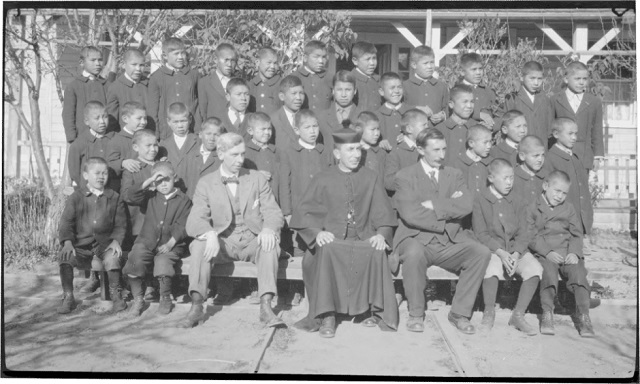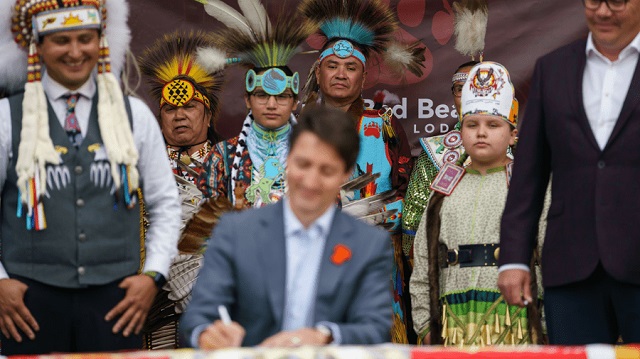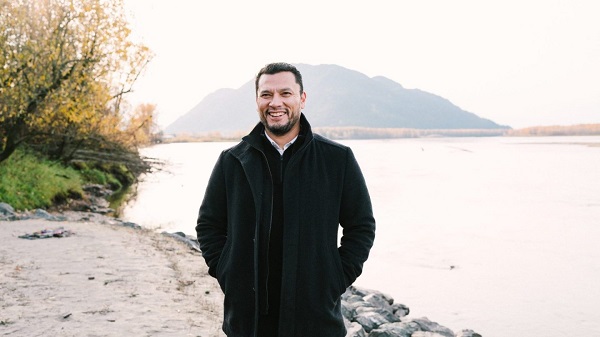Indigenous
There are no Indian Residential School denialists, so why criminalize them?

From the Frontier Centre for Public Policy
By Rodney A. Clifton, professor emeritus at the University of Manitoba and a senior fellow at the Frontier Centre for Public Policy. (He was a former Senior Boys’ Supervisor in Stringer Hall, the Anglican residence in Inuvik.)
” both sides agree that Indian Residential Schools existed, and that some children were harmed. But they disagree on the evidence needed to prove whether children were murdered and buried unceremoniously in residential schoolyards. “
In a recent Canadian Press story, Kimberly Murray, the government’s special interlocutor on unmarked graves of missing Indigenous children from residential schools, is reported as saying: “We could … make it an offense to incite hate and promote hate against Indigenous people by … denying that residential (schools) happened or downplaying what happened in the institutions.” Not surprisingly, the Liberal government of Prime Minister Justin Trudeau is sympathetic to the special interlocutor’s call to action.
Ms. Murray says that Indigenous leaders across the country support her call for legislation. The Assembly of Manitoba Chiefs (AMC), for example, asked the Justice Minister, Arif Virani, to amend the criminal code to criminalize denialism. AMC Grand Chief Cathy Merrick said that enacting such a law would provide “an opportunity for Canada to demonstrate an honest commitment to reconciliation…. to deny the existence of these institutions is a form of violence.”
The focus on missing and murdered Indigenous children at residential schools became a national disgrace at the end of May 2021 when the Kamloops First Nation announced that stories from Knowledge Keepers and evidence from ground-penetrating radar (GPR) had “discovered” the graves of 215 children in the schoolyard of the Kamloops Indian Residential School.
Since that announcement, first nations across the country have discovered many more “graves,” also relying on Knowledge Keepers stories and GPR evidence. But so far, no bodies of IRS students have been exhumed from the schoolyards, even though the Chief TRC Commissioner, Justice Murry Sinclair, told CBC Radio host Matt Galloway a couple of years ago that as many as 15,000 to 25,000 Indian Residential School students are missing.
Surprisingly, these claims are not included in the Truth and Reconciliation Commission (TRC) Report. In fact, only one story of a murdered child is reported in the TRC Report, and it is the unverified story told by Doris Young about seeing a child’s murder at the Anglican Elkhorn Indian Residential School in Manitoba. The Commission reported this alleged murder but did not investigate the claim. Indeed, the Commission spent $60 million over six years and did not report any evidence, other than the Doris Young’s claim, of the murder of Indigenous children at residential schools.
What does this mean for criminalizing denialism?
There are at least three problems with potential legislation to criminalize denialism. First, Canada already has legislation on hate speech, and so new legislation is unnecessary.
Second, the definition of “denialism,” as reported above, is so vague that it would be almost impossible to convict anyone.
Finally, and most importantly, from what can be gathered from both Ms. Murray’s interim report and recent news items, practically no Canadians deny that Indian Residential Schools existed or that some children were harmed at those schools.
What Canadians seem to disagree on is the evidence that is needed to prove that IRS students were murdered, and their bodies were unceremoniously buried in unmarked graves in residential schoolyards.
On Ms. Murray’s side, supporters’ reason that “hear-say” evidence from Indigenous Knowledge Keepers and shadows on GPR screens are adequate to prove the claim. On the other side, the so-called “deniers” reason that forensic evidence from exhumed bodies is needed.
So, both sides agree that Indian Residential Schools existed, and that some children were harmed. But they disagree on the evidence needed to prove whether children were murdered and buried unceremoniously in residential schoolyards.
The Canadian law enforcement and justice system is the proper agency for an impartial investigation of this claim, and if evidence is obtained, to criminally charge those Indigenous and non-Indigenous IRS employees responsible and to report their names and crimes if they are deceased.
Surely Canadians would support such an impartial investigation leading to possible criminal charges. Till that happens, there is no reason to demonize the so-called “deniers” by those who disagree with the evidence they think is necessary to answer this important question. Without an independent investigation along with a public report, Canada cannot reach a fair and just reconciliation between Indigenous and non-Indigenous Canadians.
Indeed, many people are wondering why such a rigorous, systematic, investigation has not yet been conducted. It is the time to settle this issue so that both sides—indeed all Canadians—can move on from being pitted against each other over an issue that can be easily resolved with an independent investigation by competent justice officials.
Rodney A. Clifton is a is a professor emeritus at the University of Manitoba and a senior fellow at the Frontier Centre for Public Policy. He lived for four months in Old Sun, the Anglican Residential School on the Blackfoot (Siksika) First Nation, and was the Senior Boys’ Supervisor in Stringer Hall, the Anglican residence in Inuvik. Rodney Clifton and Mard DeWolf are the editors of From Truth Comes Reconciliation: An Assessment of the Truth and Reconciliation Commission Report (Frontier Centre for Public Policy, 2021). A second and expanded edition of this book will be published in 2024.
Business
Ottawa has spent nearly $18 billion settling Indigenous ‘specific claims’ since 2015

From the Fraser Institute
By Tom Flanagan
Since 2015, the federal government has paid nearly $18 billion settling an increasing number of ‘specific claims’ by First Nations, including more than $7 billion last year alone, finds a new study released today by the Fraser Institute, an independent, non-partisan Canadian public policy think tank.
“Specific claims are for past treaty breaches, and as such, their number should be finite. But instead of declining over time, the number of claims keeps growing as lucrative settlements are reached, which in turn prompts even more claims,” said Tom Flanagan, Fraser Institute senior fellow, professor emeritus of political science at the University of Calgary and author of Specific Claims—an Out-of-Control Program.
The study reveals details about “specific claims,” which began in 1974 and are filed by First Nations who claim that Canadian governments—past or present—violated the Indian Act or historic treaty agreements, such as when governments purchased reserve land for railway lines or hydro projects. Most “specific claims” date back 100 years or more. Specific claims are contrasted with comprehensive claims, which arise from the absence of a treaty.
Crucially, the number of specific claims and the value of the settlement paid out have increased dramatically since 2015.
In 2015/16, 11 ‘specific claims’ were filed with the federal government, and the total value of the settlements was $27 million (in 2024 dollars, to adjust for inflation). The number of claims increased virtually every year since so that by 2024/25, 69 ‘specific claims’ were filed, and the value of the settlements in 2024/25 was $7.061 billion. All told, from 2015/16 to 2024/25, the value of all ‘specific claims’ settlements was $17.9 billion (inflation adjusted).
“First Nations have had 50 years to study their history, looking for violations of treaty and legislation. That is more than enough time for the discovery of legitimate grievances,” Flanagan said.
“Ottawa should set a deadline for filing specific claims so that the government and First Nations leaders can focus instead on programs that would do more to improve the living standards and prosperity for both current and future Indigenous peoples.”

Specific Claims: An Out-of-Control Program
- Specific claims are based on the government’s alleged failure to abide by provisions of the Indian Act or a treaty.
- The federal government began to entertain such claims in 1974. The number and value of claims increased gradually until 2017, when both started to rise at an extraordinary rate.
- In fiscal year 2024/25, the government settled 69 claims for an astonishing total of $7.1 billion dollars.
- The evidence suggests at least two causes for this sudden acceleration. One was the new approach of Justin Trudeau’s Liberal government toward settling Indigenous claims, an approach adopted in 2015 and formalized by Minister of Justice Jodi Wilson-Raybould’s 2019 practice directive. Under the new policy, the Department of Justice was instructed to negotiate rather than litigate claims.
- Another factor was the recognition, beginning around 2017, of “cows and plows” claims based on the allegation that agricultural assistance promised in early treaties—seed grain, cattle, agricultural implements—never arrived or was of poor quality.
- The specific-claims process should be terminated. Fifty years is long enough to discover legitimate grievances.
- The government should announce a short but reasonable period, say three years, for new claims to be submitted. Claims that have already been submitted should be processed, but with more rigorous instructions to the Department of Justice for legal scrutiny.
- The government should also require more transparency about what happens to these settlements. At present, much of the revenue paid out disappears into First Nations’ “settlement trusts”, for which there is no public disclosure.
Business
Natural gas pipeline ownership spreads across 36 First Nations in B.C.

Chief David Jimmie is president of Stonlasec8 and Chief of Squiala First Nation in B.C. He also chairs the Western Indigenous Pipeline Group. Photo courtesy Western Indigenous Pipeline Group
From the Canadian Energy Centre
Stonlasec8 agreement is Canada’s first federal Indigenous loan guarantee
The first federally backed Indigenous loan guarantee paves the way for increased prosperity for 36 First Nations communities in British Columbia.
In May, Canada Development Investment Corporation (CDEV) announced a $400 million backstop for the consortium to jointly purchase 12.5 per cent ownership of Enbridge’s Westcoast natural gas pipeline system for $712 million.
In the works for two years, the deal redefines long-standing relationships around a pipeline that has been in operation for generations.
“For 65 years, there’s never been an opportunity or a conversation about participating in an asset that’s come through the territory,” said Chief David Jimmie of the Squiala First Nation near Vancouver, B.C.
“We now have an opportunity to have our Nation’s voices heard directly when we have concerns and our partners are willing to listen.”
Jimmie chairs the Stonlasec8 Indigenous Alliance, which represents the communities buying into the Enbridge system.
The name Stonlasec8 reflects the different regions represented in the agreement, he said.
The Westcoast pipeline stretches more than 2,900 kilometres from northeast B.C. near the Alberta border to the Canada-U.S. border near Bellingham, Wash., running through the middle of the province.

It delivers up to 3.6 billion cubic feet per day of natural gas throughout B.C. and the Lower Mainland, Alberta and the U.S. Pacific Northwest.
“While we see the benefits back to communities, we are still reminded of our responsibility to the land, air and water so it is important to think of reinvestment opportunities in alternative energy sources and how we can offset the carbon footprint,” Jimmie said.
He also chairs the Western Indigenous Pipeline Group (WIPG), a coalition of First Nations communities working in partnership with Pembina Pipeline to secure an ownership stake in the newly expanded Trans Mountain pipeline system.
There is overlap between the communities in the two groups, he said.
CDEV vice-president Sébastien Labelle said provincial models such as the Alberta Indigenous Opportunities Corporation (AIOC) and Ontario’s Indigenous Opportunities Financing Program helped bring the federal government’s version of the loan guarantee to life.
“It’s not a new idea. Alberta started it before us, and Ontario,” Labelle said.
“We hired some of the same advisors AIOC hired because we want to make sure we are aligned with the market. We didn’t want to start something completely new.”
Broadly, Jimmie said the Stonlasec8 agreement will provide sustained funding for investments like housing, infrastructure, environmental stewardship and cultural preservation. But it’s up to the individual communities how to spend the ongoing proceeds.
The long-term cash injections from owning equity stakes of major projects can provide benefits that traditional funding agreements with the federal government do not, he said.
Labelle said the goal is to ensure Indigenous communities benefit from projects on their traditional territories.
“There’s a lot of intangible, indirect things that I think are hugely important from an economic perspective,” he said.
“You are improving the relationship with pipeline companies, you are improving social license to do projects like this.”
Jimmie stressed the impact the collaborative atmosphere of the negotiations had on the success of the Stonlasec8 agreement.
“It takes true collaboration to reach a successful partnership, which doesn’t always happen. And from the Nation representation, the sophistication of the group was one of the best I’ve ever worked with.”
-

 armed forces1 day ago
armed forces1 day agoCanada’s Military Can’t Be Fixed With Cash Alone
-

 Alberta1 day ago
Alberta1 day agoCOVID mandates protester in Canada released on bail after over 2 years in jail
-

 International1 day ago
International1 day agoTrump transportation secretary tells governors to remove ‘rainbow crosswalks’
-

 Business1 day ago
Business1 day agoCanada’s loyalty to globalism is bleeding our economy dry
-

 Alberta1 day ago
Alberta1 day agoAlberta Next: Alberta Pension Plan
-

 Business1 day ago
Business1 day agoCarney’s spending makes Trudeau look like a cheapskate
-

 Crime2 days ago
Crime2 days agoProject Sleeping Giant: Inside the Chinese Mercantile Machine Linking Beijing’s Underground Banks and the Sinaloa Cartel
-

 C2C Journal23 hours ago
C2C Journal23 hours agoCanada Desperately Needs a Baby Bump







